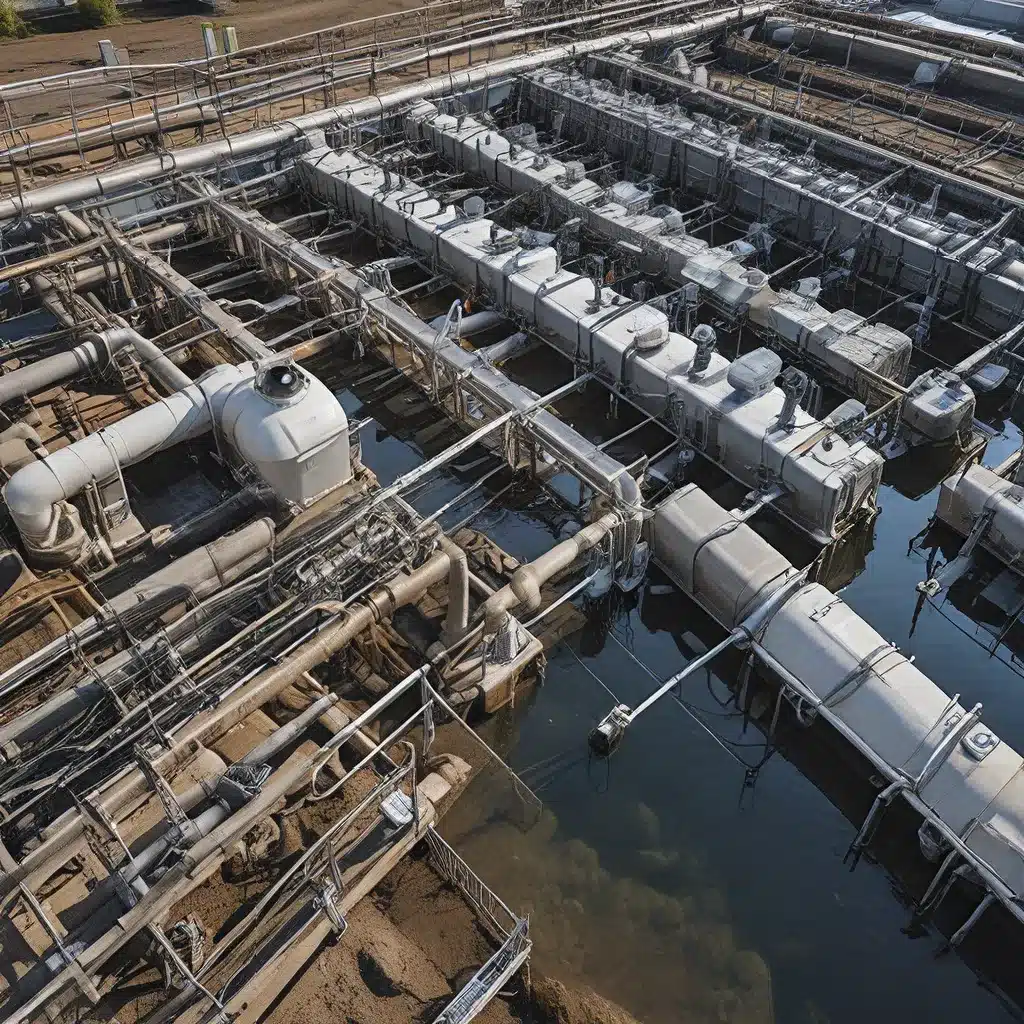
The Murky World of Wastewater Treatment
As I stood by the edge of the treatment plant, the pungent aroma of sewage filled the air, a stark reminder of the vital yet often overlooked work happening beneath the surface. Wastewater treatment is the unsung hero of modern society, quietly processing billions of gallons of waste each day to protect our waterways and public health. But this essential task is about to undergo a profound transformation, thanks to the revolutionary power of artificial intelligence (AI).
Recent studies have shown that AI-driven technologies have the potential to revolutionize every aspect of wastewater treatment, from initial treatment to final discharge. By leveraging the vast amounts of data generated by these complex systems, AI can optimize operations, predict equipment failures, and even identify new ways to extract valuable resources from waste.
The AI Advantage in Wastewater Treatment
Imagine a wastewater treatment plant that can anticipate problems before they even occur. AI-powered predictive maintenance models can analyze sensor data and historical records to identify potential equipment failures or process bottlenecks, allowing operators to take proactive action. This not only reduces unplanned downtime but also extends the lifespan of critical infrastructure, saving utilities millions in costly repairs.
But the benefits of AI go far beyond maintenance. AI-driven process optimization can fine-tune every step of the treatment process, from chemical dosing to aeration, to maximize efficiency and minimize energy consumption. By continuously learning from real-time data, these AI systems can adapt to changing conditions and quickly identify the most effective treatment strategies.
And the potential doesn’t stop there. AI-enabled resource recovery is opening up new avenues for treating wastewater as a valuable commodity rather than a waste product. Through advanced data analysis and pattern recognition, AI can help identify opportunities to extract resources like nutrients, energy, and even clean water from the waste stream, creating new revenue streams for utilities.
Embracing the AI Revolution
Despite the clear benefits, the adoption of AI in wastewater treatment has been relatively slow compared to other industries. Experts attribute this to a combination of regulatory hurdles, cybersecurity concerns, and a general reluctance to embrace new technologies. But as the technology matures and the cost-savings become more evident, the tide is starting to turn.
Leading utilities around the world are already dipping their toes into the AI waters. The city of Los Angeles, for example, has implemented an AI-powered system to optimize its wastewater treatment processes, resulting in a 20% reduction in energy consumption and a significant decrease in greenhouse gas emissions.
In Singapore, researchers are exploring the use of AI to detect and identify emerging contaminants in wastewater, paving the way for more targeted and effective treatment strategies. And in Denmark, a team of scientists is using AI to develop new methods for extracting valuable nutrients from sludge, transforming waste into a valuable resource.
These are just a few examples of how AI is reshaping the future of wastewater treatment. As the technology continues to evolve, we can expect to see even more innovative applications emerge, from autonomous monitoring systems to self-learning treatment algorithms.
Overcoming the Challenges
Of course, the road to AI-powered wastewater treatment is not without its challenges. Cybersecurity concerns are a major hurdle, as these AI systems will be handling sensitive data and critical infrastructure. Robust security measures and rigorous testing will be essential to ensure the safety and reliability of these systems.
Another challenge is the need for skilled personnel to develop, implement, and maintain these AI-driven technologies. Wastewater treatment operators and engineers will need to acquire new skillsets, and utilities will need to invest in training and upskilling programs to stay ahead of the curve.
And then there’s the issue of data quality and availability. Effective AI-powered wastewater treatment relies on vast amounts of high-quality data, which can be difficult to come by in an industry that has historically been data-poor. Utilities will need to prioritize data collection and management, ensuring that their AI systems have the information they need to make informed decisions.
The Future of Wastewater Treatment
As the world grapples with the growing challenges of water scarcity, climate change, and urbanization, the role of wastewater treatment has never been more critical. And with the transformative power of AI, the future of this essential industry is poised to be more efficient, sustainable, and resource-rich than ever before.
By embracing the AI revolution, utilities can not only improve their bottom line but also play a vital role in protecting our most precious natural resource: water. The journey may not be easy, but the rewards of a smarter, more resilient wastewater treatment system are well worth the effort.
So, as I stand here, watching the ebb and flow of the treatment process, I can’t help but feel a sense of excitement for what the future holds. The days of wastewater being seen as a mere nuisance are coming to an end, and in their place, a new era of innovation and sustainability is on the horizon. Inland Waters is proud to be a part of this transformative journey, using the latest AI technologies to unlock the full potential of wastewater treatment.


